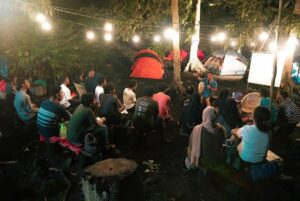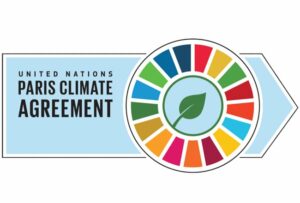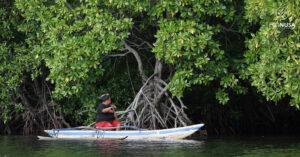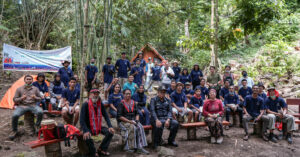Indonesia is known as a country with the largest mangrove forest area in the world. With a total area of about 3,311,208 hectares, mangrove forests in Indonesia account for 21% of the world’s total mangrove land. Preventing abrasion and erosion, providing a home for some animals, and absorbing large amounts of carbon dioxide emissions are just a few examples. Mangrove forests are thought to be capable of absorbing between 4 and 12 gigatons of carbon each year. As a result, it’s no surprise that mangroves are one of the vegetation types that contribute significantly to our efforts to address the climate crisis.
Unfortunately, at this time the condition of mangrove forests in Indonesia is not doing well. According to the National Mangrove Map, currently around 19% of them are in critical condition and need to be rehabilitated immediately. In addition, according to the Natural Resources Management Advocacy Network (JAPESDA), Indonesia has lost about 800,000 hectares of mangrove ecosystems in the last 30 years. The conversion of land functions is one of the factors that causes damage to mangrove forests. Many mangrove areas are removed to make way for tambak (giant ponds), which are thought to help the fishing sector advance and have a high economic value.
Wanamina: A System to Preserve Mangrove Ecosystem
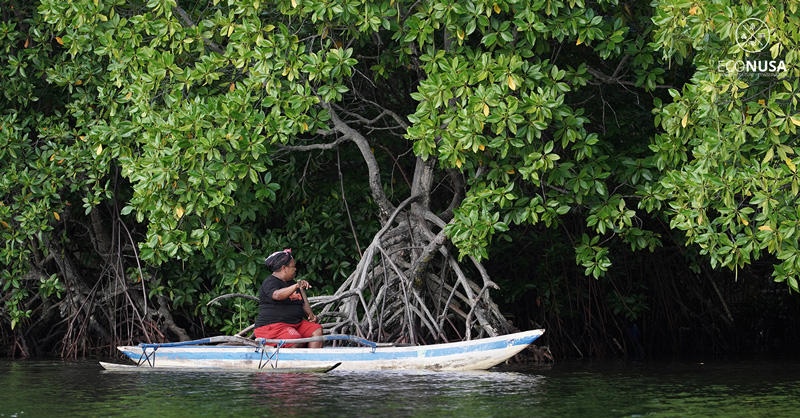
In fact, there is a way to aquaculture in ponds without sacrificing mangrove conservation, and that is to use a wanamina or silvofishery system. Wanamina is a forest and ocean management approach that uses traditional technologies and incorporates local wisdom. It is made up of two words: wana (forest) and mina (marine). One strategy to do so is to combine fish or shrimp farming in ponds with the planting, maintenance, management, and preservation of mangrove forests.
There are at least three different types of ponds that can be created using the wanamina technique. The first is the embankment trench (empang parit) model, in which the mangrove is planted in the centre of the pond and the aquaculture is done around it to make it look like a ditch. The komplangan model is the second pond model. The pond and the mangrove-planted area in this model are alternately placed next to each other in this model. Meanwhile, the path model is the third option. This pond model is similar to the embankment trench model, but the pond is larger, with a depth of up to 80 cm and a width of roughly 3-5 meters.
Currently, the wanamina system has been implemented in various mangrove forests in Indonesia. For example, in West Kalimantan’s Mempawah Regency, Lampung’s Tulang Bawang Regency, and Bangka Belitung Province. The local community can profit from the creation of ponds for the cultivation of marine creatures as well as the ongoing rehabilitation and conservation of mangrove land. For instance, receiving more marine animal catches than before and being better protected from abrasion.
Isn’t it fascinating to learn about the wanawima system? The implementation of wanamina also demonstrates that environmental conservation and economic development can coexist and even complement one another. In 2021, EcoNusa has also promoted wanamina to the wider community through the Sail to Campus program in collaboration with 4 universities in Luwuk and Poso, namely Universitas Muhammadiyah Luwuk, Universitas Tompotika, Universitas Sintuwu Maroso, and Universitas Kristen Tentena.
In addition to holding a webinar discussing the topic of wanamina, mangrove planting was also carried out in the ponds of Uwedikan village, East Luwuk, Central Sulawesi. During this activity, there were around 500 mangroves that were successfully planted.Isn’t it incredible? If you want to learn more about wanamina, you can go to the EcoNusa TV YouTube page and watch the Sail to Campus webinar video about wanamina!



